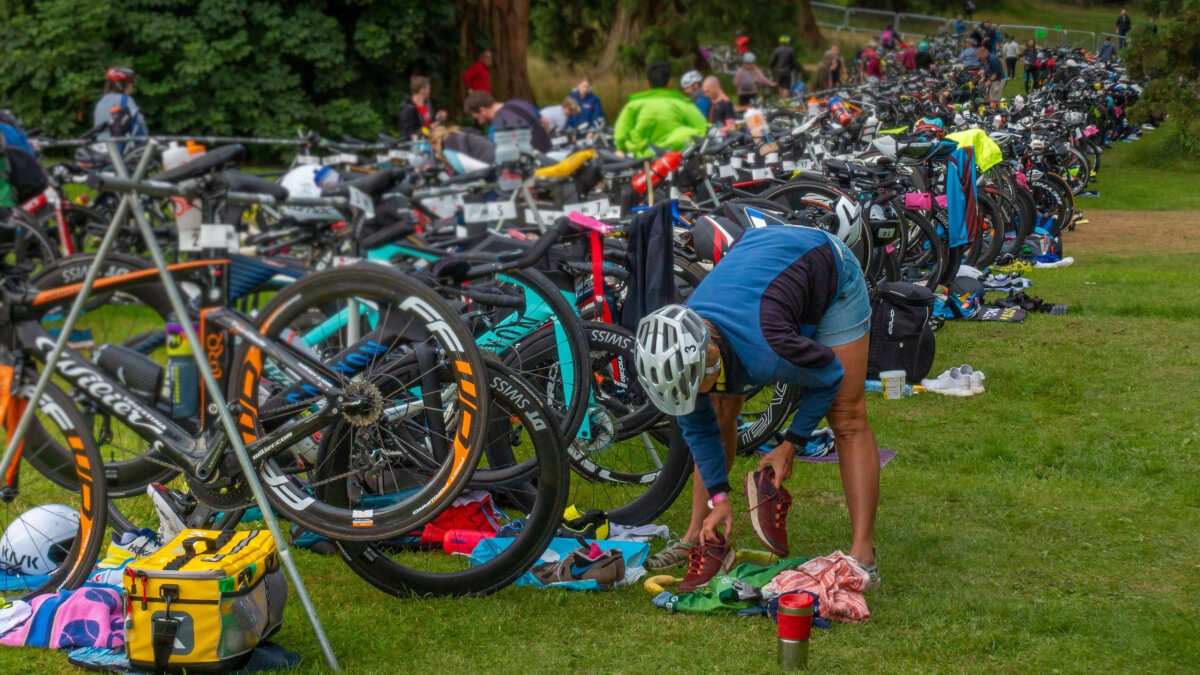Without a doubt, much has been written about the transition process in the Triathlon. Rightly so, as it concerns both coaches and athletes. Overall, the Triathlon transition isn’t the most difficult part of a triathlon race, in terms of duration or technique; at least, not as compared to the total duration of the race and the three sports, per se. However, smoother transitions in Triathlon are critical for all triathletes. All the more so for elite athletes, for whom every minute counts; and even a few seconds can be enough to prevent them from winning the race or disqualify them from a championship.
With these in mind, let’s go over a few practical tips, to help you ‘flatten the transition curve’ 😉.
5 Simple tips for faster and smoother transitions
1. Practice transitions during the training process
When it comes to races, good preparation is a decisive factor in bringing about the desirable outcome. In this case, to have faster and smoother transitions, you need to include transitions in your training program.
First, you have to create a routine for the T1 and train well in it. Make sure that this routine allows you to remove your wetsuit quickly, and without much effort, when you come out of the water. Likewise, you have to create a routine for T2 — the most ‘tricky’ transition — that will help you change equipment fast for the running leg. And don’t forget brick workouts; they’ll surely help your body make a smoother transition into running, after spending hours on the bike.
Other than that, it’s also important to train your mind, too. To explain, you need to be focused at all times, to be able to organize your equipment properly in the transition area; and, of course, not to leave important equipment you need for the next sport behind. All in all, try to create routines that work for you. This wil help both your body and mind adapt fast to very different conditions.
2. Learn the route to and from the transition area well
The next step is to familiarize yourself with the transition area of the race you’re competing in. Upon arriving in the transition area, do the route from the swim exit to your bike several times, on foot. Make a mental note on where you can start removing the wetsuit; while also pinpointing fixed visual signs and marks along the route that will help you spot your bike quickly. Once you spot your bike, grab it and do the route towards the starting line of the cycling leg. Do the same for the bike-to-running transition. This way, you’ll mentally map out the whole process, and be well-prepared on the day of the race.
3. Be well organized
As you know, the Triathlon requires a lot of gear and equipment; which is why you need to develop some serious organizational skills; that is, if you’re not Monica Geller already 😜. That said, make sure that your gear and equipment in the transition area are divided and arranged per sport; and, in the order in which you’ll use them. Needless to say, this will save you valuable time; and significantly reduce the chances of forgetting essential equipment needed for the next sport. And as you’ve probably already guessed, yes, you need to create a routine for this one too. A routine that will help you organize your triathlon equipment better, and allow you to be more focused on the race.
4. Expect the unexpected
More often than not, athletes believe they have everything under control; yet, by Murphy’s law ☝, something happens at the last minute (e.g. a tire bursts). And they have to run in panic to find a solution. Hence, to avoid any last-minute turmoil, just think about all those times when something went wrong, and what you had to do to save the situation. Apart from your own mishaps, try to think of other possible bad-luck scenarios — along with solutions. But, hey, don’t overdo it!
Based on those scenarios, gather up everything you may need, either in the transition area or during the race. It’s always better to have more gear and equipment than to worry about finding a solution at the very last minute; which, unfortunately, might as well make you abandon the race.
5. Be fast, but not in a hurry
This is a race, of course you need to be fast; but you need to be careful, not in a hurry. Making haste certainly won’t make smoother transitions for you. On the contrary, making impetuous and sloppy movements in the transition area will only create confusion in your mind and body.
And, just like that, the chances of forgetting important equipment — and even tearing your race number during installation, by mistake — increase exponentially. If anything, all your moves need to be premeditated so that you can act quickly, but not hastily; consider it a choreography of sorts.
Like our content?
Be the first to know when something new comes out!
Keep a clear head!
The transition is an important part of the Triathlon, but don’t get all worked up about it. I mean, there are other, more important aspects in the Triathlon — the sports themselves, and your performance in the race. As you’ve probably gathered by now, keeping a clear head will greatly help you achieve smoother transitions. If something doesn’t go as planned, you’ll have enough time to correct it. So be well-prepared, stay focused, be fast — but not in a hurry — and everything will go well ✌!
